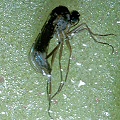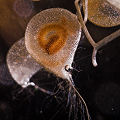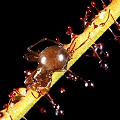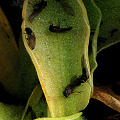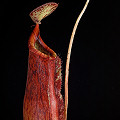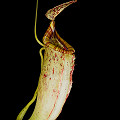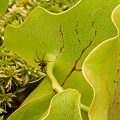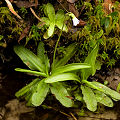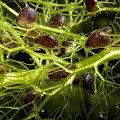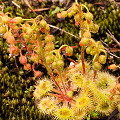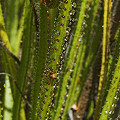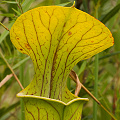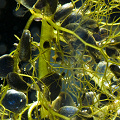This is the system i am using at the moment!
you can buy the whole guide here: Click Here!
Carnivorous Plants Quebec
Sunday, May 13, 2012
Saturday, May 12, 2012
Working on the new website
Were are working hard on our new website located @t http://carnivorous.techom.ca!
Thanks to techom.ca for the hosting! All about nepenthes over there! read our new exiting stories!
http://carnivorous.techom.ca!
Thanks to techom.ca for the hosting! All about nepenthes over there! read our new exiting stories!
http://carnivorous.techom.ca!
Thursday, April 19, 2012
How often should I feed my plant?
Another way I am frequently asked this is, "Can I overfeed my plant?"
The truth is, feeding your plant is the last thing you should be worrying about. Your plant only needs bugs if all its other horticultural requirements are being met. You should be worrying about the light, humidity, and water your plant is getting. Only once you have those things addressed and your plant is growing really well should you concern yourself with feeding it.
In fact, a poorly grown plant often suffers from being fed. The leaves die or get moldy. This is because the poorly grown plant can't muster the energy to properly digest the plant and so the food rots instead of being digested.
Even if healthy, your plants really do not need to be fed! They will survive perfectly well without you giving them bugs. They may grow a little slower, but they will live.
It is also likely that you don't have to feed your plants because they are getting plenty of bugs already. Unless you keep a house so clean that your coworkers like to talk about it behind your back, you actually have quite a few bugs in your house that your plant will get: gnats, roaches, flies, earwigs, and others. So relax!!
All that being said, you still probably itch to feed your plant, and I understand, so here is a simple guideline--do not feed it more than about one bug per week. If you want to feed it more often, get more plants.
P.S. Experienced carnivorous plant growers may think I'm being too hard on you, and might insist that you can feed your plants more often. The problem is that it is easy to overdo the feeding. I have conducted feeding experiments and have found that Venus flytrap deprived of food can be damaged by overfeeding. I would not be surprised if other carnivorous plants are the same way.
The truth is, feeding your plant is the last thing you should be worrying about. Your plant only needs bugs if all its other horticultural requirements are being met. You should be worrying about the light, humidity, and water your plant is getting. Only once you have those things addressed and your plant is growing really well should you concern yourself with feeding it.
In fact, a poorly grown plant often suffers from being fed. The leaves die or get moldy. This is because the poorly grown plant can't muster the energy to properly digest the plant and so the food rots instead of being digested.
Even if healthy, your plants really do not need to be fed! They will survive perfectly well without you giving them bugs. They may grow a little slower, but they will live.
It is also likely that you don't have to feed your plants because they are getting plenty of bugs already. Unless you keep a house so clean that your coworkers like to talk about it behind your back, you actually have quite a few bugs in your house that your plant will get: gnats, roaches, flies, earwigs, and others. So relax!!
All that being said, you still probably itch to feed your plant, and I understand, so here is a simple guideline--do not feed it more than about one bug per week. If you want to feed it more often, get more plants.
P.S. Experienced carnivorous plant growers may think I'm being too hard on you, and might insist that you can feed your plants more often. The problem is that it is easy to overdo the feeding. I have conducted feeding experiments and have found that Venus flytrap deprived of food can be damaged by overfeeding. I would not be surprised if other carnivorous plants are the same way.
Labels:
Butterworts,
carnivorous,
Dionaea muscipula,
Dionea,
Fused,
genetic,
Heliamphora,
Live Plants,
Nepenthes,
Sundews
Thumbnail guidelines on growing a tropical pitcher plant
So, you have a Nepenthes, huh? Not quite my recommendation as a first carnivorous plant for the beginner to try. The challenge is that these plants can be really big, and so require really large growing areas. They don't usually tuck into a small terrarium very conveniently.
Let me suppose that you bought a small plant. By small, I mean a plant that occupies about as much area as your hand, with your fingers splayed. In this case, growing the plant is pretty easy. Unlike most carnivorous plants, Nepenthes do not require super bright light. So it might actually survive on a very bright windowsill. But it does like the light it would get from a bright terrarium, so don't hesitate to consider rigging up a carnivorous plant terrarium as I describe elsewhere in the FAQ. Even a bottle terrarium will be helpful if your plant is small enough.
Nepenthes plants do not like to be sitting in water, so put your little potted plant in a shallow saucer and water it every day or so---however often you find it necessary to keep the potting medium moist. If you keep it sitting in water, the root system will become dwarfed (at least for most species) and the plant will be small in general. They like conditions humid and warm. Never give them a winter dormancy, as they are tropical plants that grow year-round. If you must transplant them, put them in a mix like 50:50 Sphagnum:perlite.
Nepenthes like very high humidity, around 70-100%, so you'll need to keep it in some kind of humidity enclosure like one of the terrarium options I mentioned above.
If, for some fool reason, you have yourself a very large plant, you're going to have a devil of a time finding a place you can keep it. It will need lots of light, and plenty of humidity. Follow the same guidelines as for small plants---don't let it sit in water, but keep the soil moist. How you're going to achieve all this in a conventional house, I don't know. You really need a greenhouse.
If you try growing Nepenthes, but don't do it very well, the plant will probably survive fairly well, but might just look like a lanky vine. The pitchers the plant had when you bought it will eventually die, and the new leaves that form won't make replacement pitchers. This is very frustrating, I know. What must you do to have a plant make pitchers? Just grow the dang thing better. Pitcherless leaves, by itself, is such a general symptom that it can't be used to diagnose exactly what you're doing wrong.
If you have a Nepenthes plant and really want it to grow, I recommend you buy a book like D'Amato. That will cover all the extra stuff like fertilizing, propagation, etc.
Finally, if for some reason you have a hair up your bum to grow Nepenthes rajah as your first plant, take a pill or something. This is a very expensive plant with particular needs, and is suitable only for the expert.
Let me suppose that you bought a small plant. By small, I mean a plant that occupies about as much area as your hand, with your fingers splayed. In this case, growing the plant is pretty easy. Unlike most carnivorous plants, Nepenthes do not require super bright light. So it might actually survive on a very bright windowsill. But it does like the light it would get from a bright terrarium, so don't hesitate to consider rigging up a carnivorous plant terrarium as I describe elsewhere in the FAQ. Even a bottle terrarium will be helpful if your plant is small enough.
Nepenthes plants do not like to be sitting in water, so put your little potted plant in a shallow saucer and water it every day or so---however often you find it necessary to keep the potting medium moist. If you keep it sitting in water, the root system will become dwarfed (at least for most species) and the plant will be small in general. They like conditions humid and warm. Never give them a winter dormancy, as they are tropical plants that grow year-round. If you must transplant them, put them in a mix like 50:50 Sphagnum:perlite.
Nepenthes like very high humidity, around 70-100%, so you'll need to keep it in some kind of humidity enclosure like one of the terrarium options I mentioned above.
If, for some fool reason, you have yourself a very large plant, you're going to have a devil of a time finding a place you can keep it. It will need lots of light, and plenty of humidity. Follow the same guidelines as for small plants---don't let it sit in water, but keep the soil moist. How you're going to achieve all this in a conventional house, I don't know. You really need a greenhouse.
If you try growing Nepenthes, but don't do it very well, the plant will probably survive fairly well, but might just look like a lanky vine. The pitchers the plant had when you bought it will eventually die, and the new leaves that form won't make replacement pitchers. This is very frustrating, I know. What must you do to have a plant make pitchers? Just grow the dang thing better. Pitcherless leaves, by itself, is such a general symptom that it can't be used to diagnose exactly what you're doing wrong.
If you have a Nepenthes plant and really want it to grow, I recommend you buy a book like D'Amato. That will cover all the extra stuff like fertilizing, propagation, etc.
Finally, if for some reason you have a hair up your bum to grow Nepenthes rajah as your first plant, take a pill or something. This is a very expensive plant with particular needs, and is suitable only for the expert.
Labels:
carnivorous,
earth,
endemic,
genetic,
Heliamphora,
Live Plants,
Nepenthes,
Peat Moss,
Perennial,
Perlite Vermiculite,
pitcher,
plant,
Rajah,
reproduce,
Sarracenia,
seeds,
Sphagnum
What do you mean by "absorption pathways?"
This is the third attribute of a carnivorous plant:
A pathway is available that allows nutrients to be absorbed into the plant, thus contributing to the plant's competitive and reproductive fitness. For most carnivorous plants, nutrients are transmitted via diffusion through trap fluids. In some cases (i.e., Roridula), nutrients are first passed through the digestive tracts of mutualistic organisms and then deposited, as fecal matter, onto the leaves, whereupon they enter the plant through cuticular gaps.
The nutrients pass into plants by three mechanisms, depending upon the plant.
A pathway is available that allows nutrients to be absorbed into the plant, thus contributing to the plant's competitive and reproductive fitness. For most carnivorous plants, nutrients are transmitted via diffusion through trap fluids. In some cases (i.e., Roridula), nutrients are first passed through the digestive tracts of mutualistic organisms and then deposited, as fecal matter, onto the leaves, whereupon they enter the plant through cuticular gaps.
The nutrients pass into plants by three mechanisms, depending upon the plant.
- Some plants have specialized cells or cellular structures to allow for the absorption of nutrients. Examples include the stalked or sessile glands of Drosera or Pinguicula, or the quadrifid glands inside the bladders of Utricularia.
- Nutrients may enter the tissues directly. The interior pitcher walls of Sarracenia lack the waxy protective layer called a cuticle. This allows the nutrients from the pitcher fluids to enter the plant.
- Nutrients may enter the tissues through specialized gaps in the cuticle. In Roridula, breaks in the cuticle allow the nutrients from hemipteran fecal matter to enter the plants. Cuticular gaps are a big liability for plants because they expose the plant to dehydration or invasion by pests and disease, so a plant will not have such gaps unless they confer a real benefit to it.
Did you notice that, in my definition, I note that the nutrients must confer a benefit to the plant? This is important because it is the evolutionary drive behind selecting for carnivory. Plants will not evolve to be carnivorous if there is plenty of food present for it in the soil! For this reason, I don't think we will ever discover a carnivorous plant that occurs in rich, fertile soils.
Labels:
awesome,
carnivorous,
Dionaea muscipula,
Dionea,
endemic,
flowers,
genetic,
Peat Moss,
Perennial,
Perlite Vermiculite,
pitcher,
pitchers,
Sphagnum,
Sundews,
terrarium
How many carnivorous plants exist?
The famous Venus flytrap is only one of many species of carnivorous plants. More than 670 species and subspecies of carnivorous plants have been described (although humans have caused some to become extinct). The genus with the largest number of species (over two hundred) is Utricularia, but many other genera exist and this FAQ discusses them all. I have prepared a taxonomical breakdown of all the different carnivorous genera, sorted by botanical Order and Family. This page is my most updated set of species listings, so you can count the number of carnivorous plants yourself. Looking at it you will see that many plants are carnivorous!
Labels:
Butterworts,
carnivorous,
Dionea,
disorder,
largest,
leaves,
Live Plants,
Muscipula,
Nepenthes,
Perlite Vermiculite,
plants,
Rajah,
sarracenioides,
seeds,
species,
Sphagnum,
Sundews
Subscribe to:
Posts (Atom)
